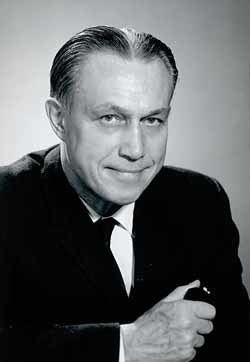Nationality American Name John Ewers | ||
 | ||
Died May 7, 1997, Arlington County, Arlington, Virginia, United States Books The horse in Blackfoot Indian culture, Plains Indian history and culture, Artists of the Old West People also search for | ||
John Canfield Ewers (July 21, 1909 – May 7, 1997) was an American ethnologist and museum curator. Known for his studies on the art and history of the American Plains Indians, he was described by The New York Times as one of his country's "foremost interpreters of American Indian culture." He was instrumental in establishing the National Museum of American History and became its Director in 1964. At the time of his death he was Ethnologist Emeritus of the Smithsonian Institution and was the first recipient of the Smithsonian's Exceptional Service Award as well as the Western History Association's Oscar O. Winther Award and the American Alliance of Museums's Distinguished Service Award.
Contents
Biography
John C. Ewers was born in Cleveland, Ohio on July 21, 1909 to Mary Alice and John Ray Ewers. He was delivered by his maternal grandmother, Dr. Martha Ann Canfield, who was among the earliest women to practice medicine in Northern Ohio. Ewers attended Dartmouth College as an undergraduate, receiving his B.A. in 1931. Following his graduation, he studied painting and drawing for a year at the Art Students League of New York before beginning his post-graduate studies at Yale University in 1932. There, he studied the art and culture of the American Plains Indians under Clark Wissler and received his master's degree with Honors in 1934. His Masters thesis formed the basis of his 1939 book, Plains Indian Painting: A Description of an Aboriginal American Art, the first of his many books and monographs in the area.
After his graduation from Yale, he took courses at Columbia University while studying the collections at the Heye Foundation's Museum of the American Indian and the American Museum of Natural History in New York City and then took up an appointment as a Field Curator with the National Park Service in 1935. During his time with the National Park Service he worked at the Vicksburg National Military Park and helped with the renovation of Indian Room at Yosemite National Park. In 1941 he was hired by the Bureau of Indian Affairs to design and establish the Museum of the Plains Indian in Browning, Montana, duties which he combined with his own extensive field work on the art, culture, and history of the Blackfeet Tribe.
In 1946, after two years of service with the US Navy in the Pacific during World War II, Ewers joined the Smithsonian Institution as Associate Curator of Ethnology, initially developing museum exhibits and working on the Smithsonian's modernization program. He became Planning Officer for the Smithsonian's Museum of History and Technology (now the National Museum of American History) in 1956, was appointed its Assistant Director in 1959, and was named the museum's Director shortly it opened in 1964. Ewers retired as the Smithsonian's senior research anthropologist with the title Enthnologist Emeritus in 1979 but continued to research, write, and attend conferences up until his death. He also taught at Texas Christian University in 1981 and during the 1970s had served as a trustee and research associate of the Museum of the American Indian in New York.
Ewers met Margaret Elizabeth Dumville in the summer of 1932 when he had finished the first year of his post-graduate studies at Yale and she was a student at Columbia. They married in 1935 and had two daughters, Jane Ewers Robinson born in 1938, and Diane Ewers Peterson born in 1944. Margaret collaborated closely with her husband in his field work with the Blackfeet in Montana and ran the newly established Museum of the Plains Indian during the two years he served in the Navy. Their 53-year marriage ended with her death in June 1988. John Ewers spent his last years in Arlington, Virginia where he died on May 7, 1997 at the age of 87. A memorial service was held for him on June 17, 1997 at the Carmichael Auditorium in the National Museum of American History.
After his death, the Western History Association established the John C. Ewers Prize, awarded biennially for the best book on the North American Indian ethnohistory. In 2003, The People of the Buffalo: Essays in Honor of John C. Ewers was published by Tatanka Press, and in 2011, The University of Oklahoma Press published Plains Indian Art: The Pioneering Work of John C. Ewers. The latter book, edited by Jane Ewers Robinson, is a collection of her father's writings originally published in American Indian Art Magazine and other periodicals between 1968 and 1992.
Honors and awards
Honors and awards received by Ewers in his lifetime include:
Publications
During his career, John C. Ewers wrote many scholarly articles, monographs, and books as well as articles for general interest magazines such as American Heritage. He also edited and wrote the introductions to 19th-century accounts of American Indian culture by Zenas Leonard, Edwin Thompson Denig, George Catlin, and Jean-Louis Berlandier. Ewers's publications include:
